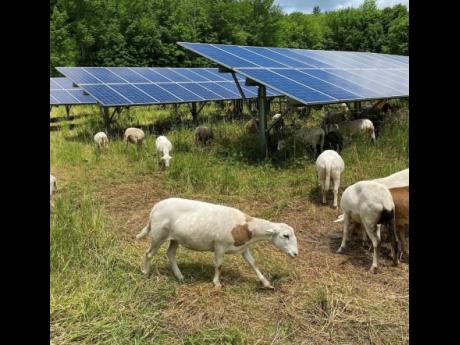Renewable energy can boost agriculture
ANAHEIM, California:
A US-based company has asserted that there is a pressing need to understand how the agricultural economy can exist in conjunction with solar sites, as countries seek to achieve renewable energy targets.
Lauren Glickman, vice-president of marketing at Encore Renewable Energy, which specialises in reclaiming undervalued real estate for clean energy generation and storage, explained that agrivoltaics allows a given area to harvest the sun not once, but twice – as fuel for crops and as a source of renewable energy.
“Solar energy production needs to grow rapidly to meet the United States’ climate goals of 100 per cent renewable energy by 2035. Scientists now predict that farmers and other landowners will lease more than two million acres of land in the US for community and utility-scale photovoltaic solar projects by 2030,” she said.
Glickman was speaking at RE+, North America’s largest renewable energy event, last Wednesday, where some 27,000 clean energy professionals were in attendance.
SOLAR GRAZING ANIMALS
Among the dual land use solar projects Encore Renewable Energy has embarked on are solar grazing and pollinator-friendly ground cover.
“Solar grazing reduces or eliminates the need for fossil fuel-powered equipment, like lawn mowers, reducing emissions and costs. Preliminary research finds that implementing managed sheep grazing at solar projects significantly increases soil carbon storage and other nutrients important for plant production,” Glickman explained.
She informed that sheep are the most common solar grazing animals as they are resourceful and discerning foragers.
Glickman added that sheep are unlikely to chew on wires, like goats would, and are not large enough to damage racking.
“Their size also allows them to walk under the panels and in and around above-ground equipment to search for vegetation that might otherwise become a shady nuisance for a solar array, or be difficult to access via traditional mowers,” she said.
She told The Gleaner that solar grazing could be replicated in Jamaica but there are likely to be limitations, given the country’s small sheep population.
Glickman said goats and cows would not be ideal livestock, given their characteristics and their likelihood of damaging the racking.
However, she noted that the aforementioned animals could participate in solar grazing if panels are planted firmly in the ground and mounted much higher than an average solar panel.
She said her company strives to maximise the value of each of its projects, whether it is located on a brown field, landfill, parking lot, rooftop, farm or an open field.
But Glickman said that while some farmers have declined to have solar sites set up on their farms, others are unaware that agrivoltaic solutions exist.
“We need to be reaching these farmers and connecting them with farmers who are experiencing success and tell those stories,” she remarked.
Meanwhile, she said solar panels that once sat on barren ground are now adorned with plants that attract bees, birds, and butterflies.
Glickman said that pollinator-friendly ground cover has proven to increase solar photovoltaics production and increase cost efficiency, as less money is spent on mowing.
Further, she said the pollination of surrounding land adds to food security and resilience, and has helped to restore declining pollinator populations since the start of the project in 2017.
On average, Encore saw a 612 per cent increase in pollinator species during the first two years and a 1,174 per cent increase over the five-year period.


